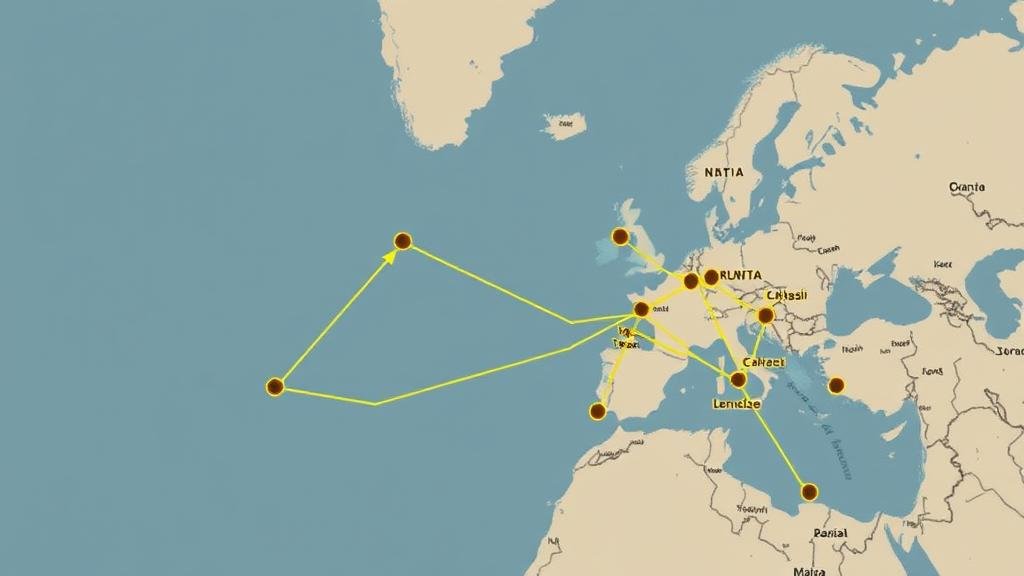Tracking Nomadic Routes to Uncover Ancient Trading Network Relics
Tracking Nomadic Routes to Uncover Ancient Trading Network Relics
Within the annals of history, the movements of nomadic tribes have profoundly influenced the development of trade networks and cultural exchanges. Understanding these nomadic routes offers significant insights into the ancient trading networks that once flourished across various regions, facilitating the dissemination of goods, ideas, and innovations. This article explores the methodologies used to track these routes and examines the relics left behind that provide tangible evidence of historical trade activities.
Historical Context of Nomadic Trading Routes
From the 1st millennium BCE onwards, nomadic tribes such as the Scythians in Central Asia and the Bedouins in the Arabian Peninsula played vital roles in the expansion of trade networks. e groups often traversed vast distances in search of grazing land, but their routes also coincided with key trade pathways. Notable trade exchanges occurred along the Silk Road, which connected East and West, facilitating the movement of silk, spices, and other valuable commodities.
The emergence of these nomadic routes can be traced through various archaeological and historical records. For example, the Scythians are documented in the writings of Herodotus around 450 BCE. are known for their extensive network of trade that linked them with both the Persian Empire and the Greek world.
Methodologies for Tracking Nomadic Routes
In recent years, advancements in technology and archaeological techniques have refined our ability to track nomadic routes. Some of the primary methodologies include:
- Geospatial Analysis: Geographic Information Systems (GIS) technology enables researchers to visualize and analyze spatial data related to ancient trade routes.
- Artifact Analysis: Studying the distribution of artifacts helps in identifying trade patterns and the extent of interaction between nomadic tribes and settled civilizations.
- Radiocarbon Dating: This method provides chronological context for archaeological sites, establishing timelines for nomadic activity and trade.
For example, a study conducted in the steppes of Kazakhstan revealed through GIS mapping that the Scythians modified their routes based on changing climatic conditions, which in turn influenced trade interactions. This dynamic approach to tracking routes reflects the adaptability of nomadic communities in response to environmental factors.
Identifying Relics of Ancient Trade Networks
The remnants of ancient trade activities can often be identified through various forms of relics, which serve as critical pieces of evidence for historians and archaeologists. Key relics associated with trading networks include:
- Coins and Currency: The discovery of coins from different civilizations can indicate the presence of trade hubs.
- Trade Goods: Items such as pottery, textiles, and tools, which show influences from multiple cultures, suggest interaction and exchange.
- Infrastructure: Remnants of trading posts, caravanserais, and roads provide insights into the logistics of trade.
For example, the excavation at the ancient site of Khotan, located along the Silk Road in modern-day China, unearthed numerous artifacts, including silk and jade, that illustrate both the luxury goods traded and the exchange networks that existed between nomads and settled societies.
Conclusion: The Importance of Nomadic Routes in Historical Networks
Tracking nomadic routes is not merely an academic pursuit but a vital endeavor that sheds light on the complexities of ancient trading networks. These routes facilitated cultural exchanges that were integral to the development of civilizations across Eurasia. By employing modern technological tools alongside traditional archaeological methods, researchers can continue to uncover the interconnectedness of ancient societies.
Plus, as climate change and modernization threaten many archaeological sites, there is an urgent need for the preservation of these findings. Future studies must focus on interdisciplinary approaches that integrate technology, anthropology, and history to ensure that the legacies of these nomadic traders are not lost to time.



